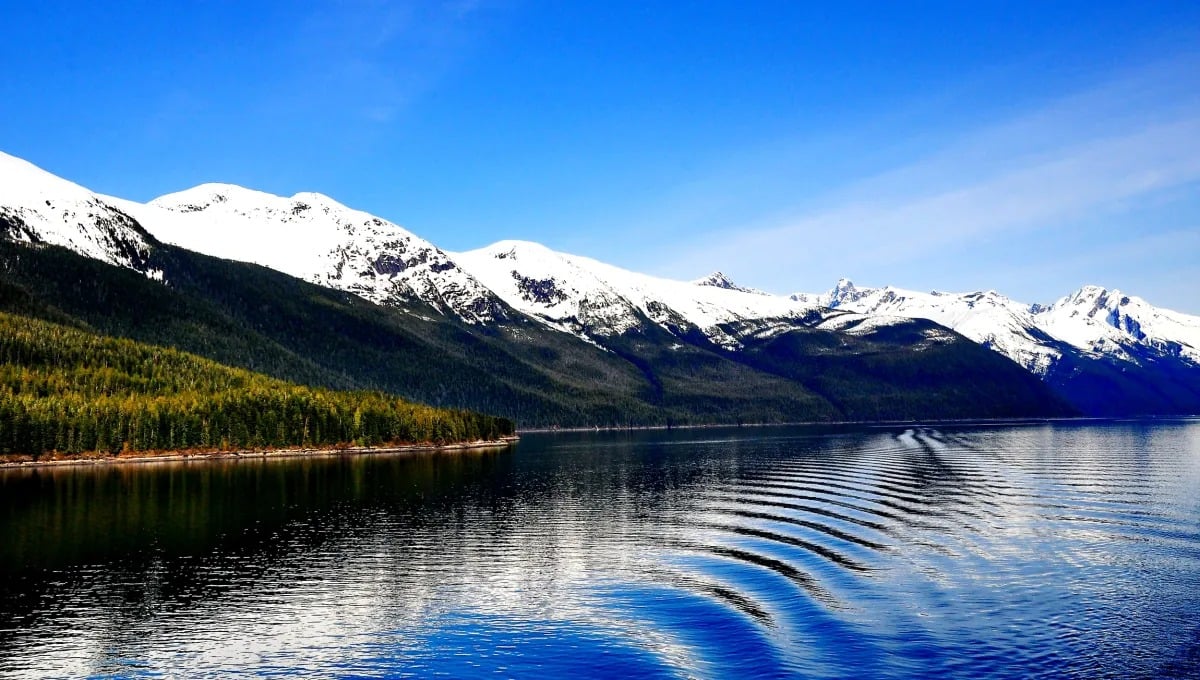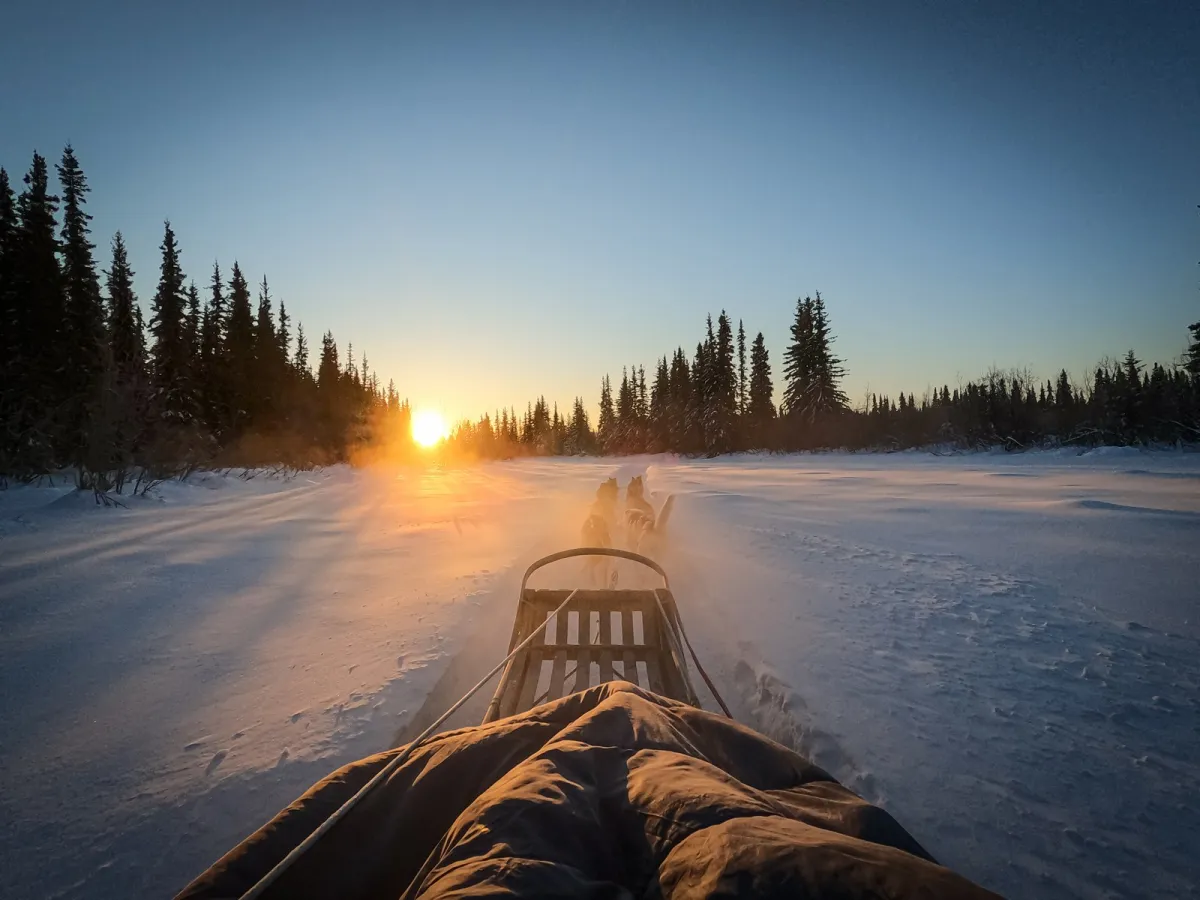
Ever since I first watched the Disney movie, “Balto”, I have been enamored with dog sledding (dog mushing). After moving to Alaska, I was determined to experience it for myself, and was not disappointed by the experience. I spent a beautiful morning gliding through deep drifts of powder accompanied by the excited yelps of 12 eager Alaskan Huskies, and then was treated to an informative afternoon learning about the sport of dog sledding from Iditarod champions.
For many tourists, dog sledding is a must-do on their Alaskan adventure. Seen as a tourist attraction to many, dog sledding still holds an invaluable place in Alaska’s rich heritage. For generations, dog sled teams were the heartbeat of transportation and communication, connecting remote villages, delivering mail, and even playing a critical role in life-saving missions.
Today, you can experience the beauty of dog sledding in numerous places throughout the state. Each experience can vary and the type of operator you chose will greatly influence your experience. To help you plan for your dog sledding adventure, here is a quick overview of dog sledding in the Last Frontier.
Fun Facts About Dog Sledding
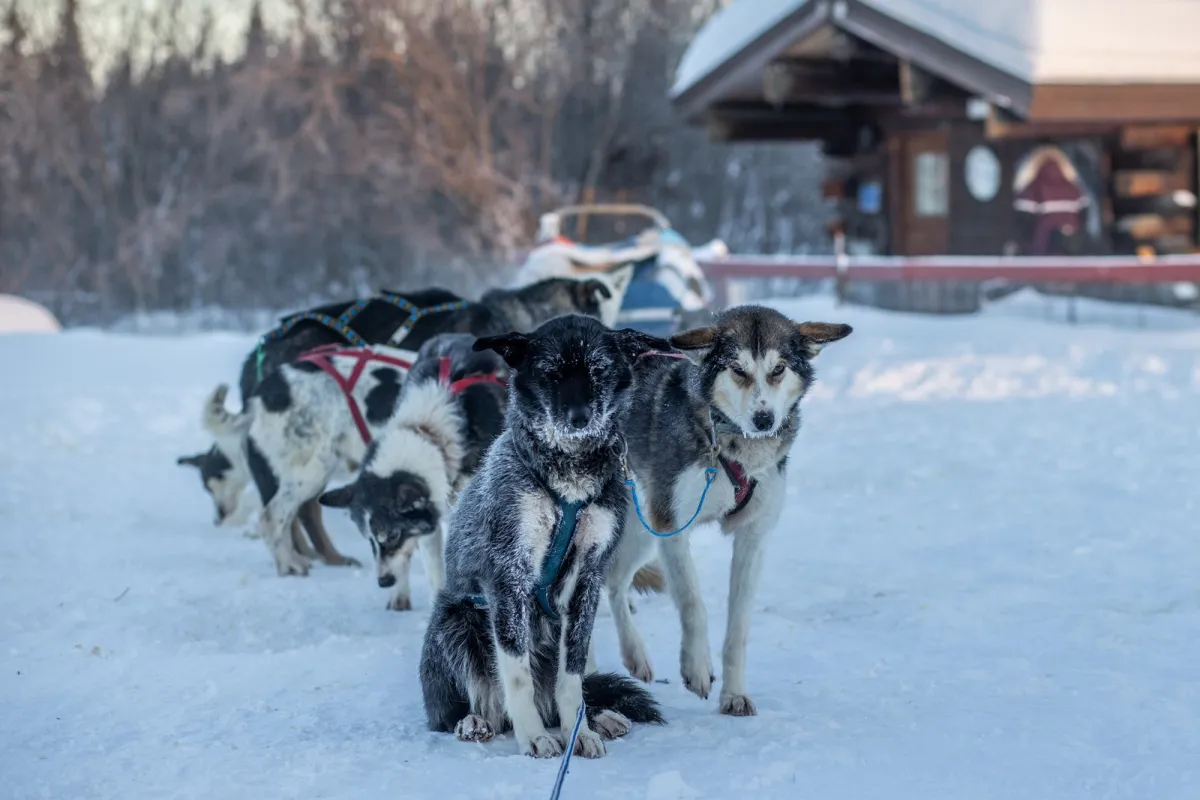
- Mushers communicate with their dogs using specific commands. "Haw" for left, "Gee" for right, and "Whoa" to stop!
- Often considered the best sled dog, the Alaskan Husky isn't technically its own breed. Instead, it's a mixed breed optimized for its incredible endurance and speed.
- While all sled dogs are crucial, the lead dogs are trained to follow the musher's commands and set the pace. They aren't necessarily the strongest but are the most intelligent and responsive.
- To protect their paws from ice, sled dogs wear booties. This footwear offers warmth and prevents ice buildup between their toes, and mushers will often stop to massage the paws of dogs. Talk about the royal treatment!
- A healthy sled dog can run up to 100 miles in a single day, showcasing their incredible stamina and zest for the journey. During your tour, you’ll get to witness firsthand the enthusiasm and excitement these dogs show when they’re leashed to the sled.
Where to Go
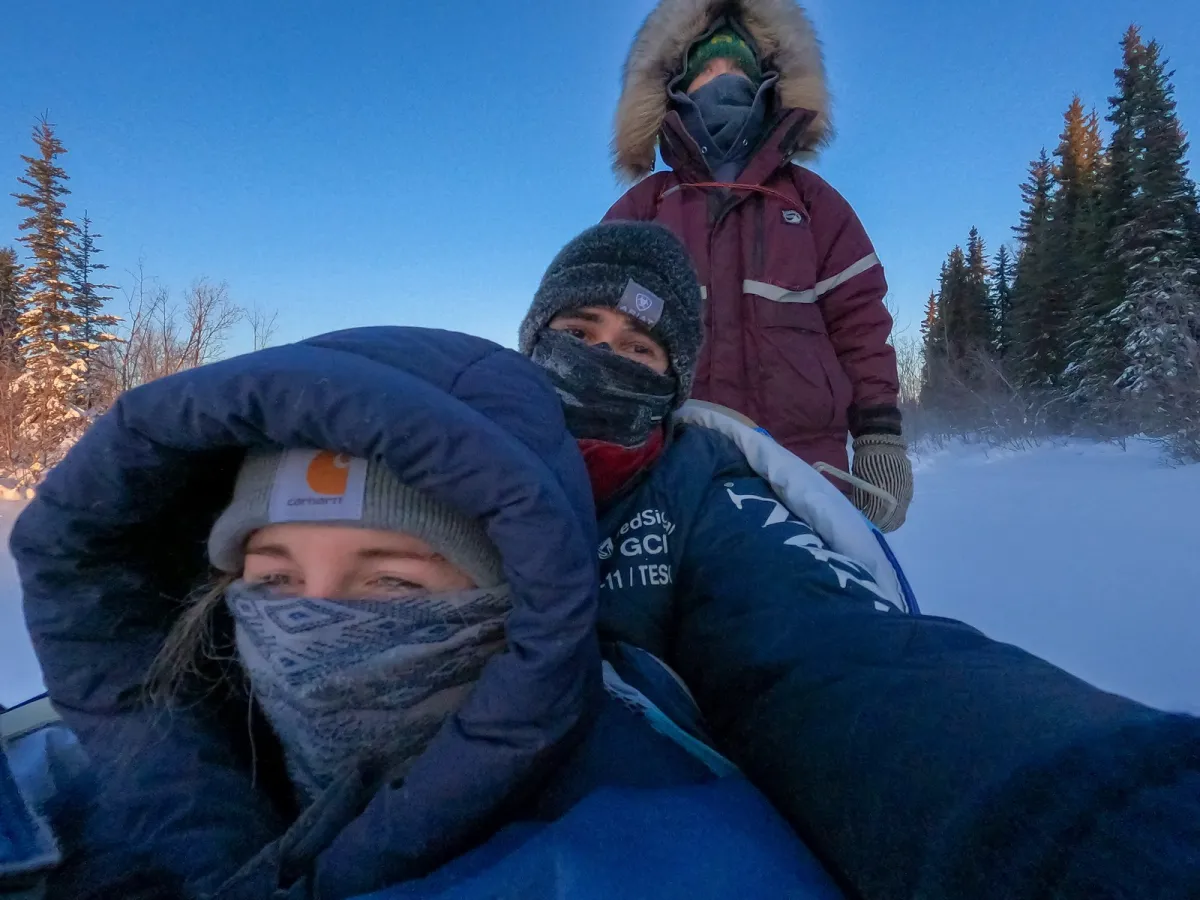
Alaska boasts a plethora of dog sledding destinations. Here are some of the most popular locations:
- Seward: offers dry cart rides through Resurrection River Valley in the summer
- Denali: the national park has a dog sled exhibit and you can also experience the thrill yourself in Cantwell, about 30 minutes south of the park
- Juneau: one of the top places to go dog sledding on a glacier
- Skagway: offers glacier dog sledding in the summer and an excellent dog mushing camp
- Fairbanks: year-round tours and the opportunity to go sledding under the Northern Lights
- Girdwood: one of the preferred locations for day trips from Anchorage
- Willow: Known as the "Dog Mushing capital of the world", this is one of the preferred locations for Idiatord champions
- Gates of the Arctic: a true wilderness experience on a multi-day mushing adventure at a remote lodge
Prices
While prices will vary depending on your operator, here are the averages around the state:
- Summer trips: Generally average around $70.
- Winter adventures: Approximately $140, due to the added allure of snowy landscapes.
- Glacier or multi-day tours: Typically priced higher, around $350 or more per person
Age and Restrictions
Most dog sledding adventures have stipulated age and weight guidelines. Always verify these before confirming your booking. Age limits can also vary depending on the temperature, so double-check if you’re planning on doing a tour in Fairbanks in the winter.
Types of Tours
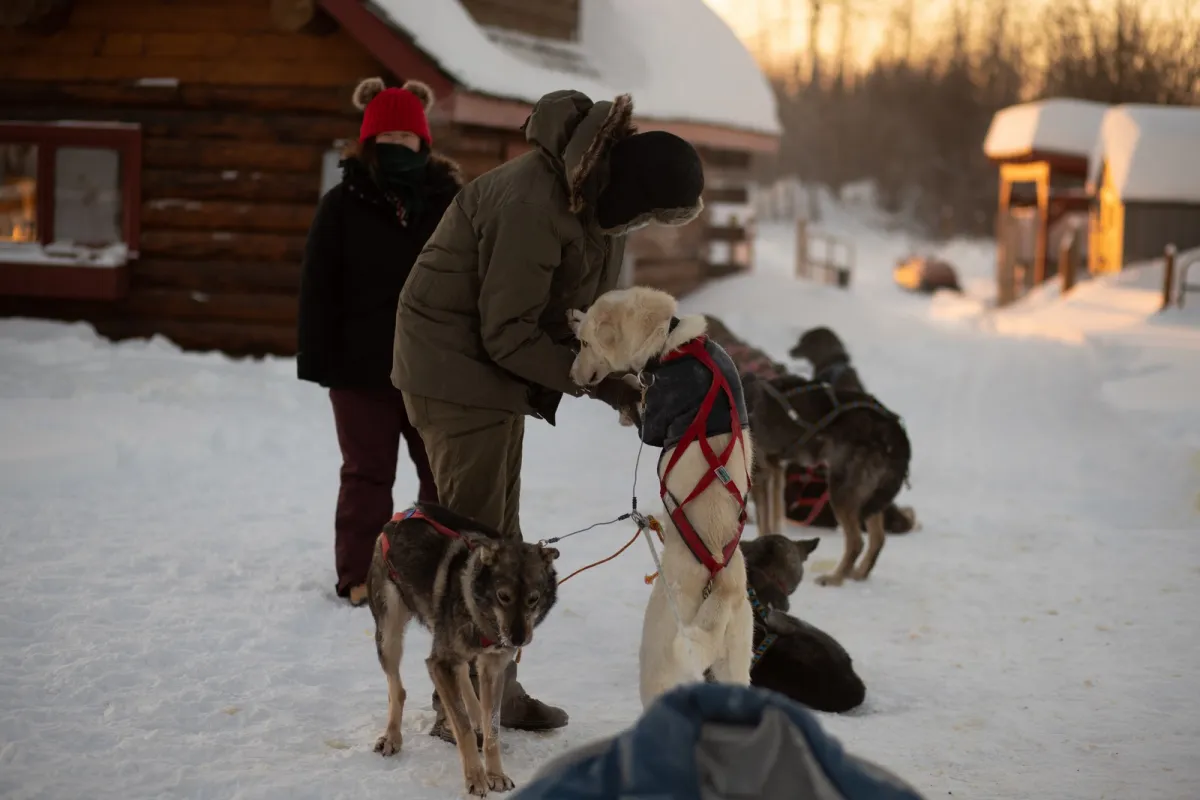
Dog mushing is available all year in the state, but the type of ride you have will depend on the season you go.
Summer Cart Tours: Experience the thrill in the warmer months as you're pulled by huskies on wheeled carts. This will be over dry dirt and grass, and not on snow.
Glacier Tours: Glacier tours allow for a more authentic experience in the summer with the option to glide across snow and ice on your sled. This is one of the most expensive tour options.
Dog Mushing: Available in the winter, dog mushing pulls you on a sled over a snow-draped landscape, driven by an experienced musher. You will typically ride in the sled covered in blankets, and most sleds can hold two people.
What to Wear
If you’re going in the winter, expect to be out in extremely cold temperatures. The tour operator will typically provide you with thick outerwear (such as coats and ski pants), but you will also want to wear your own layers, with a warm base layer. Be sure to call your operator ahead of time to get their recommendation on what to bring.
Selecting an Ethical Kennel
Ensure you choose kennels that prioritize the well-being of their sled dogs. Ethical kennels follow best practices in dog care, provide ample rest, practice Leave No Trace, and have transparent operations. Your adventure should never come at the expense of the health and happiness of the huskies. When you book your tour, you can ask your operator to describe their treatment of their animals and how they practice sustainability when out on the trails. Reading reviews from a third party source (like TripAdvisor) will also get you a general idea of how the kennel operates.

